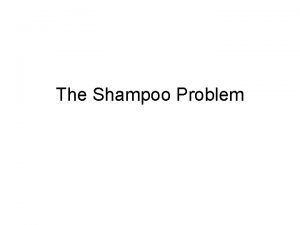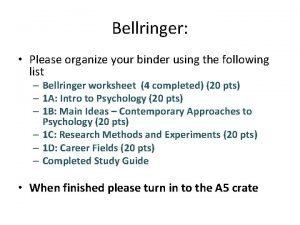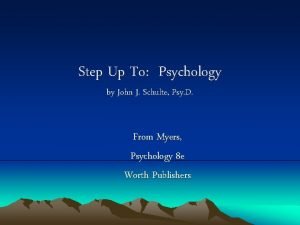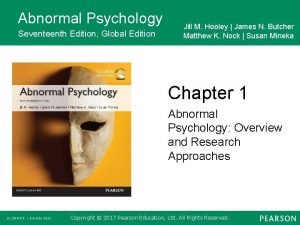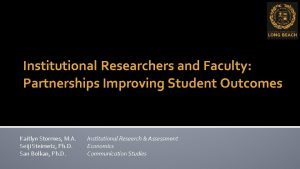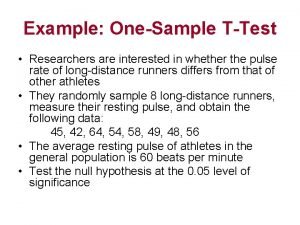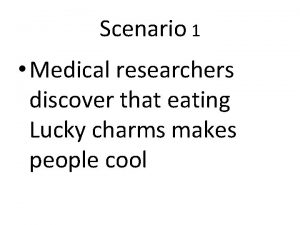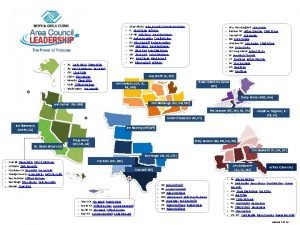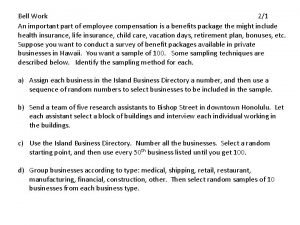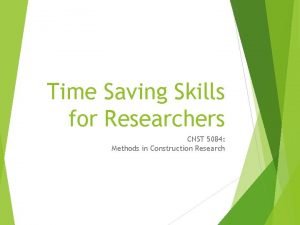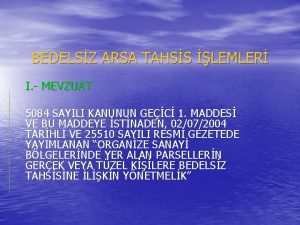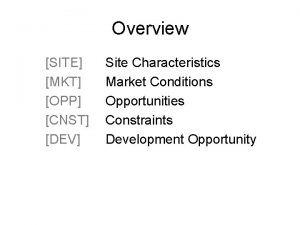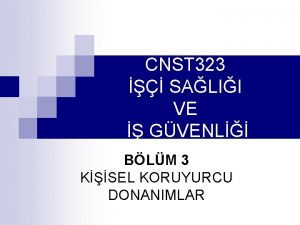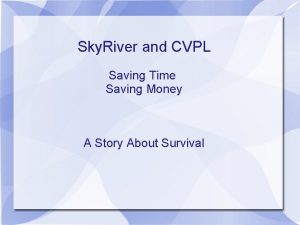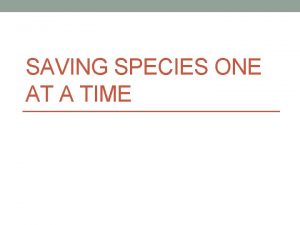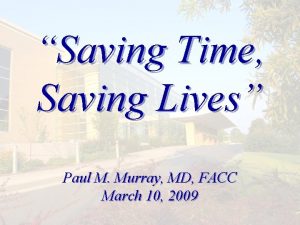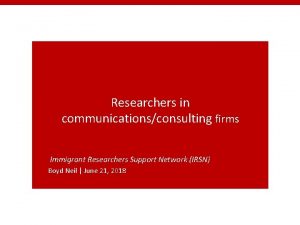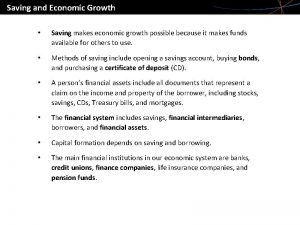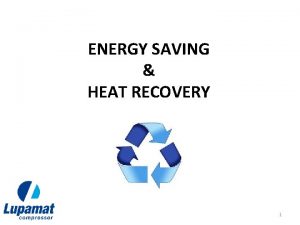Time Saving Skills for Researchers CNST 5084 Methods



























- Slides: 27

Time Saving Skills for Researchers CNST 5084: Methods in Construction Research

Saving the time of the reader, a librarian’s mantra ● Evaluating information and reading/speed reading are linked ● Without one, you can’t do the other effectively ● Today: How to save your time through the lens of evaluating information ● Before reading, you must evaluate the material and decide IF you need to read it and then, at what depth

Group activity ● Groups of 3 or 4 ● When considering an information source to use for your research/thesis, what criteria do you use to decide whether or not to use the source?

Evaluating Information Evaluating a Source - The Basics As you appraise sources of information to use in research projects, consider the following: Authority: ● Who wrote it? ● What sort of expertise do they have in this area? Coverage ● Is it relevant to your topic? Objectivity ● Is there any bias? ● If so, how much? Accuracy ● Is the information correct? ● Is it in alignment with other research findings or articles? Currency ● When was the resource produced? ● Does the time period of research or publication of results matter for your topic?

Other criteria to consider: ● ● Number of citations: ● how many times has it been cited? ● How much and in what ways are others are using this article’s research and information. ● Why is this important? Journal in which the article was published ● ● is it a high quality journal, a major journal related to the field of research that is the topic of the article? The article’s currency ● (with consideration of your field, methodology, and area of research): in some fields, it may be important to be sure to review all current research in the last 5 years; with some fields or topics, it may be important to review a longer or other specific time range.

Other criteria to consider, continued: ● Objectivity: ● ● Compare with other articles and sources if possible and consider if the article you’re evaluating demonstrates bias Is it indexed in a curated research literature database? ● (Such as Pub. Med, Web of Science) ● Is it peer reviewed? ● What type of source are you evaluating? ● ● What is the publisher of the journal where the article was published? ● ● Examples: research study describing results from an experiment; is it a literature review; is it an article from a scientific / scholarly journal, or from a trade or professional publication? What is this publisher’s reputation in the field? Who are the authors? ● What is their status, reputation, and/or level of experience?

Peer review: ● An important aspect of evaluating information ● When an article is submitted to a peer reviewed journal, the editors send it out to other scholars in the same field (the author's peers) to get their opinion on the quality of the scholarship, its relevance to the field, its appropriateness for the journal, etc. ● https: //www. lib. utexas. edu/lsl/help/modules/peer. html

Evaluating a Scholarly Journal from the VT University Libraries online Information Skills tutorial: http: //info-skills. lib. vt. edu/evaluating_info/24. html ● To truly explore an information source and learn more about scholarly journals and other key publications in your field, consider some of these criteria. Evaluate a journal where you’ve found one or more articles of interest, or consider a key online information source with on going content. Publication Structure ● Are volumes and issues, or a Table of Contents shown with links to each issue or to articles? ● Is there an archive of past issues, or is this a new journal? ● Have issues been published regularly? ● Are there advertisements? What kind? Publisher / Organization ● Is the publisher or sponsoring organization listed? ● What information can you find out about them? ● Statement of Purpose or ‘Aims & Scope’ ● Is there information about the publication’s purpose (‘Aims & Scope’), including topic areas of focus and/or intended audience?

Evaluating a Scholarly Journal Continued… Editorial Policies and/or Submission Guidelines ● Is there an Editor or a list of Editorial Board members? Who are they and what is their expertise? ● Are the editorial policies and/or submission guidelines described? ● Does this publication require peer review of submissions prior to publication? Overall scan through the website and articles within an issue ● Do the articles represent the publication’s stated purpose, scope, and editorial policies? ● Are there typographical errors or misspellings? ● Are links to outside content or within the text current and easy to follow? ● Is the font and format easy to read?

Evaluating Information is a precursor to reading/speed reading ● Determine your purpose for reading ● Don’t read what you don’t need to read! ● Adjust reading speed/style to purpose

Source evaluation is more than half the battle ● Evaluate the source to determine if you should read it and at what level of depth ● Read the abstract ● Scan the sections/chapters/bold headings ● Look for diagrams and other visuals cues such as charts and graphs ● Read the entire first paragraph, the first sentence of each paragraph, and the entire last paragraph of each section. ● Immediately after reading, ask yourself what you know that you didn’t know before you started.

Ask Why ● Why are your reading? ● What do you want (or need) to know and learn? ● What sources of info could suit those needs? ● How did you come to have THIS text? Is there a better source? ● ● Think about the different sources out there and what would suit your purpose ● Do you need a literature review, research article, news article, blog post, scholarly paper, research study? ● Do you need help from a librarian Identify what information you need from the document BEFORE you start reading.

Group Exercise ● Get into groups of 3 or 4 ● We can have up to 9 groups ● Use handout to complete exercise together and be ready to present information about your article back to the group ● FYI these articles from relevant journals and databases for your fields of Building Construction/Engineering/Architecture ☺

Types of Reading (Slides courtesy of Annie Pearce) ● Skimming – shallowest level of knowledge ● Scanning – moderate level of information ● Light reading – reading for leisure ● Word-by-word reading – “translating” from a language with which you’re unfamiliar ● Studying – obtaining detailed knowledge of a subject

Skimming ● Think about how you read a newspaper… ● Skimming involves quickly determining the general idea of a whole document ● How to skim: ● Read the title to focus your attention ● Read the introduction and confirm it’s worth reading ● Read the first sentence in each paragraph; the remaining sentences generally just elaborate on this sentence ● Read the conclusion ● Test your comprehension

Scanning ● Think of how you look for a listing in a phone book… ● Scanning involves skipping over irrelevant info ● How to scan: ● Flip through the document to determine how it’s organized (alphabetical, topical, etc. ) ● Turn to the section most likely to contain what you need ● Visualize thing you’re looking for (e. g. , keyword) ● Run your eyes over the material to search for that visual image

Light Reading ● Think of reading a novel with ample time… ● Read at a comfortable pace ● Understand as you go ● Skim the boring, irrelevant passages ● Detailed concentration is not required

Word-by-word Reading ● Think of reading a document in a language you don’t know well… ● Requires a high level of concentration ● Used for unfamiliar words and concepts, scientific formulae, technical materials, etc. ● You may need to stop to look things up, or reread to make sure you understand

Reading to Study ● Think of reading to be able to recall for a test… ● How to study – the SQ 3 R Method: ● Survey – skim to gain an overview/note key points ● Question – devise questions you will try to answer ● Read – slowly and carefully ● Recall – from memory, write down the main points ● Review – revisit the questions and compare them to your recall. Go back and read more to fill gaps.

Another question ● What technique would you use to read the article your group was assigned and why? ● Are there scenarios when you might you different techniques?

Citation Management ● Choose a tool and use it to keep track of your citations ● Library guide on this topic http: //guides. lib. vt. edu/allaboutcitations ● ● We have a group of experts on this topic. If you would like a workshop from them, you can request it! Keep track your effective searches in each database

Avoiding plagiarism ● Take notes! ● Make sure to indicate when you are taking a direct quote and note the source. Don’t wait to do this. ● Cite your sources ● Paraphrase using your own words ● If you’re unsure of something, you can ask the writing center or a librarian http: //www. composition. english. vt. edu/writingcenter/ ● List of librarians http: //www. lib. vt. edu/instruct/clprg. html

Note taking and text markup ● Keep a paper/pen handy as you read. Take notes. ● Underline/highlight/annotate text as you go. ● Underline definitions of terminology. ● Mark or label main ideas. ● Circle/box vocabulary words. ● Number important or sequential ideas. ● Come up with paraphrases, questions, and summaries in white space.

Free Speed reading software ● Note: these are not endorsed by us or Virginia Tech, but are for your information. ● Remember to evaluate whether or not you should read something BEFORE you use these programs, otherwise, you may actually be spending MORE time on reading rather than less! ● Spreeder http: //www. spreeder. com/ ● Readsy http: //www. readsy. co/ ● Eyercize http: //www. eyercize. com/

Reading/speed reading courses & resources ● Virginia Tech Resources ● Student Success Center can do a reading assessment and provide assistance ● https: //www. studentsuccess. vt. edu/Academic_Success/readi ngassessment. html ● Online resources ● Free speed reading course ● http: //readspeeder. com/

Publishing your own work ● Find the right journal ● Look at the requirements ● Does your article fit in? ● What kind of articles do they publish? ● What is the review process? How rigorous is it? Will you meet the criteria? ● What is the acceptance rate? My story about the journal Cell ● Try to get published in lower reputation journals at first ● Consider self publishing to get your name out there – blogging ● Consider publishing in newsletters in your field ● Attend the upcoming CAUS Research Symposium session on getting published on Feb. 25

Thank you! ● Ginny Pannabecker Life Science and Scholarly Communication Librarian vpannabe@vt. edu ● Leslie Mathews Art + Architecture Librarian lesliem 2@vt. edu
 Candy crush 5084
Candy crush 5084 Wax pattern fabrication pdf
Wax pattern fabrication pdf For minutes. start.
For minutes. start. Researchers who are studying a new shampoo formula
Researchers who are studying a new shampoo formula What is the cardinal rule of naturalistic observation
What is the cardinal rule of naturalistic observation Researchers have sneakily dabbed rouge
Researchers have sneakily dabbed rouge Analogue studies are used when researchers ____.
Analogue studies are used when researchers ____. Researchers
Researchers Researchers are interested in whether or not
Researchers are interested in whether or not Medical researchers discover that eating lucky charms
Medical researchers discover that eating lucky charms Medical researchers discover that eating lucky charms
Medical researchers discover that eating lucky charms Medical researchers followed 6272 swedish
Medical researchers followed 6272 swedish Kontinuitetshantering
Kontinuitetshantering Novell typiska drag
Novell typiska drag Nationell inriktning för artificiell intelligens
Nationell inriktning för artificiell intelligens Vad står k.r.å.k.a.n för
Vad står k.r.å.k.a.n för Varför kallas perioden 1918-1939 för mellankrigstiden
Varför kallas perioden 1918-1939 för mellankrigstiden En lathund för arbete med kontinuitetshantering
En lathund för arbete med kontinuitetshantering Särskild löneskatt för pensionskostnader
Särskild löneskatt för pensionskostnader Personlig tidbok fylla i
Personlig tidbok fylla i Anatomi organ reproduksi
Anatomi organ reproduksi Densitet vatten
Densitet vatten Datorkunskap för nybörjare
Datorkunskap för nybörjare Boverket ka
Boverket ka Debatt artikel mall
Debatt artikel mall Delegerande ledarskap
Delegerande ledarskap Nyckelkompetenser för livslångt lärande
Nyckelkompetenser för livslångt lärande Påbyggnader för flakfordon
Påbyggnader för flakfordon



